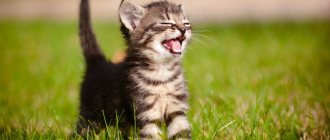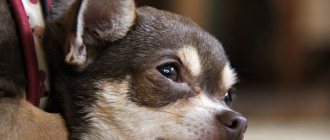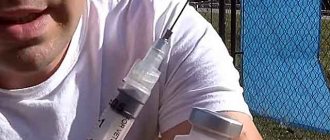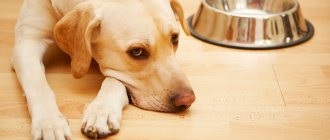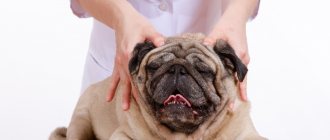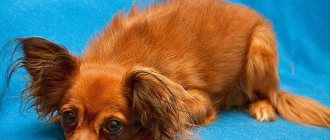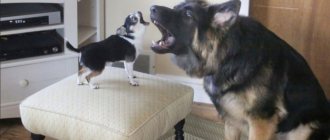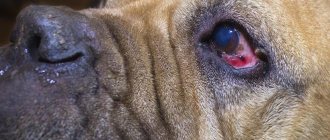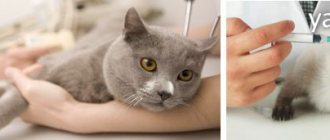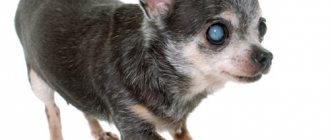What should you buy for your pet?
When preparing to welcome a cute puppy into your home, you need to prepare without missing a single detail. You can’t just bring an animal into the house, put a plate in front of it that you eat from, and play with it. This is all wrong! Before purchasing a puppy, visit a pet store, where you will need to buy the following items:
- Bowls on a stand with adjustable height. The puppy should eat from his own dish immediately. Height adjustment is necessary so that the dog eats in the correct body position. Incorrect posture when eating can cause curvature of the spine and paws.
- Toys, bones from veins. The baby will sharpen and scratch his teeth on furniture, shoes and other things if he does not have suitable objects for this activity.
- Muzzle. The Rottweiler is a serious breed of dog that scares many passersby. The pet must be accustomed to walking in a muzzle from a very early age. If this is not done, the older dog will refuse to put it on and will pull it off with his paws, feeling discomfort.
- Collar, leash and harness.
- Lots of disposable diapers. These things help teach the puppy to relieve himself outside, and not spoil the floors and rugs in the house.
- Litter. The baby must immediately have his own place in the house, otherwise he will settle down on the sofa or in an armchair.
Breed Features
When taking a puppy into your home, you need to get acquainted in advance with all the nuances that nature can present. Having fallen in love with the four-legged Rottweiler, the characteristics of the breed are such that the animal cannot limit itself to 100 g of dry food or one egg. This dog is powerful, active, designed to protect the home and owner.
Rottweiler has:
- proportionally built body;
- strong muscles and bones;
- wide and powerful jaws;
- endurance;
- irrepressible energy;
- height at the withers of an adult dog is up to 65 cm;
- weight up to 50 kg.
At the same time, the dog moves easily and freely. Despite the “heaviness” of the body, the animal looks powerful, but graceful.
This is not to say that training is easy. The animal has its own character, shows strength and stubbornness. But with the help of treats you can take possession of your pet’s soul. Rottweilers have a sweet tooth and love to eat. This feature should be taken into account from an early age. Puppies require constant supervision when feeding.
Rapid weight gain with carbohydrate feeding is an unpleasant feature of the breed.
If the diet is structured correctly, then the animal can be easily and simply accustomed to the norm, and treats can be used as a means of training.
What to do with the tail
Tail docking of a Rottweiler was previously considered a mandatory procedure. Now there are two options considered the norm - a short and a long tail. If you have agreed in advance to purchase a puppy, the breeder will ask whether your pet needs this operation.
Why was tail docking done on a Rottweiler? Let's look into this issue.
In ancient times, part of the tail of a dog of this breed was removed to protect it from damage that could be caused by other animals. Previously, Rottweilers were kept to perform the following functions:
- Protection of the owner's family and property.
- Driving cattle.
- Participation in dog fighting, which is prohibited in many countries today.
- Poisoning of wild animals.
Today, docking is not considered mandatory. The standard allows for a full tail. Many refuse this procedure, others say that with a long tail, the dog’s usual appearance is lost.
If you are getting a Rottweiler not only for fun, but also for participation in exhibitions, it is better to choose docking. The fact is that Rottweilers have a genetic predisposition to curling their tail into a ring, which is considered a defect by standards.
At what age should cupping be done?
Dogs need to remove part of their tail before ten days after birth, because during this period babies do not feel pain. If you need a Rottweiler with a docked tail, it is better to notify the breeder from whom you will be purchasing the puppy in advance.
If the decision to buy a dog came spontaneously, you chose a breeder and a puppy, but his tail is intact, then this problem can be solved. Rottweilers have their tails docked until they are six months old. This procedure is very painful, so you will have to resort to anesthesia. Next, postoperative adaptation and care will be required, as well as a return visit to the veterinarian to remove the stitches.
When to vaccinate Rottweiler puppies
Every owner of such a pet should be interested in the question of vaccinating a dog. Some vaccinations can cause complications that can be dangerous to the health and life of the animal. A dog should only receive vaccinations that are truly required for its health and safety.
Your Rottweiler should have his first diagnosis when he is 6-8 weeks old. This is usually done by breeders. As a rule, they sell puppies that are already vaccinated. But the process does not end there, as booster vaccinations will be needed every three weeks until the puppy reaches twenty weeks of age.
Adult dogs also need annual vaccinations.
Why are they placed?
Puppies receive a comprehensive vaccination that protects against the following dangerous diseases:
- Rabies.
- Enteritis.
- Parainfluenza virus.
- Leptospirosis.
- Adenovirus.
Revaccinations for Rottweilers from 20 weeks to 2 years are given against distemper, parvovirus and parainfluenza virus.
Next, you need to discuss with your veterinarian the schedule of annual vaccinations, which strengthen the dog’s immunity and protect against diseases.
Weight by month
All owners are interested in the weight standards of the Rottweiler. According to the standards, adult males should weigh 50 kilograms, and females - 42 kilograms. We invite you to familiarize yourself with the data in more detail, considering the standards at each life stage. Every owner needs to know this. For example, if at the age of five months a baby weighs less or more than normal, this indicates that he is not fed correctly and is not given proper attention (walks, physical activity, and so on).
Many people want to know what to feed a Rottweiler puppy so that it does not get sick. It is important not only the animal’s menu, but also the number of its meals during the day. With age, these indicators will change. What is necessary for a puppy is not suitable for an adult dog. Compliance with established rules in nutrition allows the animal to grow healthy. Let's consider weight norms from month to year.
- A Rottweiler should weigh between 2 and 4 kilograms per month. At this time, he is very different from a newborn baby.
- A Rottweiler puppy at 2 months weighs from 5 to 7 kilograms (girls) and 8-10 kilograms (boys).
- At three months of age, females weigh from 12 to 14 kilograms, males grow from 15 to 17 kilograms.
- At four months of age, a girl puppy weighs 15-17 kilograms, a boy - from 21 to 23 kilograms.
- A five-month-old girl weighs 22-24 kilograms, and a boy weighs even more, from 29 to 31 kilograms.
- A six-month-old female - from 28 to 30 kilograms, a male - 33-35 kilograms.
- By seven months, girls weigh 32-34 kilograms, and boys - from 38 to 40.
- At eight months, the weight of a Rottweiler is 36-38 kilograms for females and 46-48 for males.
- At nine and ten months, females weigh 38-40 kilograms, males - 48-50.
- By the age of eleven months, girls should gain weight up to 42 kilograms, and males - up to 50 kilograms.
The figures given are approximate. Small deviations do not mean that the puppy is sick or malnourished.
Natural diet
Feeding natural foods is closest to the physiology of a carnivore. Being a “butcher’s dog,” the Rottweiler’s ancestors knew no shortage of meat. Pure, high-quality protein has shaped the structure of the breed, and any carbohydrate feed introduces unnecessary adjustments. The dog gains excess weight and becomes lazy.
The puppy's diet should include:
- milk and dairy products;
- meat and meat products (including offal);
- fish;
- eggs.
A puppy's life begins with milk. If the dog brought into the house is 1-1.5 months old, then most likely he has already received additional complementary foods. You need to find out about this (what the puppy ate, how much, what food). If this information is not available, then offering him everything one by one in 1-2 days will make it easy to study your pet’s “culinary” preferences. At first, it is better not to deviate too much from your previous diet. New foods should be introduced gradually.
Milk and dairy products
The puppy's mother's milk is rich in fat, protein and calcium. Cow's milk is poorer, but during the growth period it will provide the necessary easily digestible minerals and proteins. The puppy should be offered milk. If he refuses fresh, offer yogurt or kefir. These products:
- will help the intestinal microflora develop;
- improve immunity;
- enrich the growing body with minerals.
Fermented milk cheese (cottage cheese) and sour cream are also excellent food. They should be included in the diet every day. Milk fat is a source of fat-soluble vitamins (A, D, E, K). They are the ones who will help hair growth and timely molting, visual acuity, and the formation of the reproductive system at a young age.
Feed should be introduced into the diet gradually. In this case, it is necessary to monitor the formation of fecal masses. If they are clearly formed, with a characteristic dog smell (without stench), everything is fine.
On store shelves you can find milk substitutes, milk-containing products and albumin-based dairy products. Such feeding will not be beneficial for the puppy’s body.
A separate place can be given to whey. An excellent fermented milk product is extremely beneficial for a growing body. Being a source of calcium and phosphorus when consumed daily, it can well balance the diet.
Milk and whey are not something to drink, they are food. They do not replace water.
Meat products
Meat products should account for 60% of the puppy’s daily diet. It is not necessary to feed your dog veal tenderloin, but meat is the basis of the diet.
The most optimal would be alternation:
- pork;
- beef;
- chicken;
- rabbit meat;
- lamb and goat meat;
- game.
All types of meat can be fed raw if they have passed a veterinary and sanitary examination. If the owner is a hunter and wild boar meat is in abundance, then it should not be fed raw or fried, especially giblets. It is necessary to boil such a product for at least an hour after boiling. This event will be a good prevention of trichinosis.
In order to reduce the cost of the diet, they resort to offal. They should not be given uncooked. Heat treatment should last at least 30 minutes from the moment of boiling.
You can include in your diet:
- heart;
- lungs;
- kidneys;
- cattle tripe;
- gizzards, liver and hearts of poultry;
- poultry broth sets.
Bones are essential food for a dog, and a growing organism as well. For a small puppy, give preference to the shoulder blade. The upper part, covered with cartilage tissue, is easy to bite through. It saturates the puppy well and is a valuable source of calcium and phosphorus.
The bones are voluminous. The stomach muscles cope quite well with this food. The dog remains full for a long time. If after eating bones the puppy refuses to eat food, this is normal, he is not hungry.
Eggs
The most balanced and valuable dog food is eggs. They contain:
- essential amino acids;
- fat-soluble vitamins (including Vit U);
- minerals.
A one-month-old puppy can easily eat one chicken egg. Don't deny him this. Eggs should be washed before feeding (prevention of salmonellosis). After feeding the egg, watch the puppy. If there is no reaction from the skin, and feces are formed, offer the product daily.
Fish
There is no need for expensive types of fish to feed a puppy. You can choose such as:
- sprat;
- herring;
- sardines;
- hake;
- pollock.
These types of fish are quite capable of satisfying the puppy’s body’s need for Omega-3 acids.
Before serving fish to your puppy, it should be boiled. There is no need to choose bones - they are a source of minerals.
Inland fish can cause helminthic infestation. It can be fed after boiling for at least 30 minutes after boiling, or abandoned altogether.
Carbohydrates
Of course, the puppy will beg for sugar, candy, and cookies. These products can get on the tongue, but only in tiny doses, in the form of a treat.
For a large dog, the owner often uses cereals in the form of porridges. They are not necessary. However, if you need to somehow fill up your diet, then practice sharing meals. At the same time you can boil:
- buckwheat;
- rice;
- pearl barley (barley);
- oatmeal.
Some dogs enjoy eating boiled potatoes. However, this does not mean that it should become a daily food.
It should be remembered that carbohydrates change the acid-base balance in the body of a carnivore - this can provoke a chlamydia infection. The little puppy doesn’t eat much and you can give up grains for now.
Advantages of natural feeding
By giving preference to natural products, the owner himself controls and balances the puppy’s intake of healthy nutrients. By introducing certain nutrients, using common sense, you can easily identify a product that is not suitable for a four-legged animal and remove it from the diet.
Natural feeding:
- more balanced;
- allows you to control the quality and quantity of certain components;
- carries “living” and useful biologically active substances and minerals.
Flaw
To create a diet and prepare food you need:
- time for purchase and processing;
- storage;
- energy and time to clean dishes and feeding areas.
Puppy in a new home
Owners think about what to feed their Rottweiler puppy when he is taken away from his mother. The previous owners should tell what was included in the baby’s diet, how to accustom him to the new food, and so on.
If the puppy was fed natural food, and you want to continue the same, then stick to the rule: table food is not for the dog! Next, we will offer a list of permitted and prohibited products, and tell you in what form to give them.
If you decide to switch your dog to specialized food, then choose only premium and elite food classes for your Rottweiler. You cannot immediately pour a full bowl of such food; you need to transfer the animal from natural food to dry food gradually, so as not to disturb digestion, which can result in intestinal volvulus. The food packaging should contain instructions for transfer. Dry food is given along with natural food in small proportions, gradually increasing the amount of food and decreasing the amount of porridge/soup.
Also, you cannot immediately switch your puppy from dry food to natural food. As in the previous option, gradually increase the portion of porridge/soup, reducing the portion of food.
Choosing a place and dishes
A service dog must be organized. The owner can help her with this. From a young age, the puppy should be accustomed to the place where food is taken and to eat utensils. You cannot accustom your puppy to eating food from your hand or in a place not designated for this purpose. The owner's hand giving a “yummy” should be like a reward for obedience, following commands, attentiveness and submission.
The choice of place and utensils should be made carefully. It is better to do this before the animal appears in the house.
If the dog’s place of residence is an enclosure, then it should be divided into zones. The bowl can be placed at the entrance and away from the resting place. It is necessary to calculate that when the dog is closed, it should not be able to turn over bowls of food and water. If the pet will live in the house, then the place for receiving food cannot be organized in the walkway.
The feeding place should be:
- spacious (considering that the puppy will grow quickly, and the size of an adult dog is impressive);
- secluded (nothing should distract attention from eating food);
- easy to clean (there is no guarantee that the dog will eat exclusively from the bowl);
- remote from places of rest and play;
- constantly accessible (the feeding area should not be closed by a door or located in a drawer;
- constant (it is undesirable to feed the dog constantly in different places).
When choosing dishes, it is better to give preference to a permanent, heavy bowl. Initially, the puppy will get used to it. The vessel should be made of food-grade material that is easy to wash. Considering the powerful jaws of the Rottweiler, the strength also needs to be matched.
The value can be selected within 1-1.5 times of feeding. A big dog shouldn't eat from a bucket, it's not a pig. A 1-1.5 liter bowl will be enough. Hills and steps for a dog of this breed are not provided.
Optimal natural food menu
A Rottweiler puppy appeared in the house. What to feed the baby? This is of most interest to people who have decided to get a dog for the first time. There are no difficulties here, you just need to remember the permitted and prohibited products.
A puppy, like a human child, needs nutritious, tasty, healthy food rich in vitamins and nutrients. The diet should contain meat - lamb, rabbit, poultry, cereals, dairy products, offal, fermented milk products, vegetables, herbs, chicken and quail eggs. Bones scalded with boiling water can be introduced into the diet no earlier than 3.5 months. These should be medium-sized beef moslaks. Do not give bird or fish bones under any circumstances; not only a puppy, but also an adult dog can injure themselves or choke on them.
It is mandatory to give meat to your dog. Its norm per day should be approximately 40% of all food.
From four months, low-fat sea fish is introduced (river fish is not recommended). It needs to be boiled and the bones removed. You need to pamper your pet with fish once a week. Also, from this age, you can add lamb and boiled offal to the diet. They are given no more than twice a week.
Rottweiler porridge can be cooked from buckwheat, rice, oatmeal, oats in milk, meat or vegetable broth, or simply in water. It is good to prepare such a dish with the addition of meat, yogurt, milk and sour cream, vegetables, herbs and cottage cheese. Salt is not added under any circumstances.
Once a week you should give him a raw egg. Boiled eggs can be given twice a week.
It is advisable to season vegetables with vegetable oil so that the beneficial substances are better absorbed. The daily intake of vegetables should be at least 20%.
With any diet, a dog needs a full bowl of clean water.
Animal products
If the feeding regimen has not been disrupted, and the puppies have received the necessary deworming (at the age of 21 days and 2 months before the first vaccination), then at 3 months their gastrointestinal tract is able to cope perfectly with the following protein products:
- raw veal or lean beef, cut into pieces (fed daily);
- low-fat cottage cheese (fed daily);
- boneless pieces of boiled low-fat sea fish, such as pollock, hake, cod (fed 2-3 times a week);
- raw or boiled chicken egg yolk, or whole raw quail egg (fed 2-3 times a week);
- pieces of soft unsalted and low-fat cheese (fed 2-3 times a week).
- kefir, yogurt or unsweetened natural yogurt (fed 2-3 times a week).
Muscle meat is the most valuable nutritional product for a growing Rottweiler, and its share in the caloric content of the diet should be at least 30%. A Rottweiler puppy at the age of 3 months should receive at least 400g of muscle meat per day, at 4 months - 500g, at 5 months - 600g, and from 6 months to a year - 700-800g.
In addition to beef (veal), the menu includes horse meat, lean lamb, chicken, rabbit and turkey. Raw meat is healthier than cooked meat, so about 30-50% of the daily requirement is fed raw.
Pork, as well as fatty poultry meat (geese, ducks, turkeys) causes digestive upset in dogs due to excessive stress on the liver and pancreas, and therefore is not recommended. Some puppies may develop a delayed allergic reaction (for example, to chicken), resulting in skin rashes, dandruff, itching and redness of the skin, especially on the inside of the ears, between the toes and on the belly.
Like meat, fish is a source of complete protein and also contains highly digestible fats, vitamins A and D, and many macro- and microelements. River fish are very bony and can be infected with parasitic worm eggs, so it is better to use lean sea fish.
It is noteworthy that the tissues of many fish contain the enzyme thiaminase, which destroys vital vitamin B1. That is why “fish days” on the Rottweiler’s menu should be infrequent, and fish fed more often should be boiled before serving. The optimal diet is considered to be one in which fish feed accounts for 3-5% of the calorie content.
Fish oil has long been considered an excellent remedy for rickets and is fed to young animals for the health of the musculoskeletal system. It is recommended to use purified, high-quality sturgeon fish oil (for example, halibut), which is sold in the form of capsules in the pharmacy chain. This product should be stored in a cool place without access to light (in the refrigerator), since in the light vitamin D turns into a toxic substance - toxysterol.
Fermented milk products in a puppy's diet can replace some of the meat. Cottage cheese is especially highly nutritious. They begin to feed him from 3 weeks, bringing him to 150-200 g per day by the age of 6 months.
I would like to draw your attention to the fact that milk is completely removed from the diet from the age of 3 months due to the fact that the intestines of grown-up puppies and adult dogs do not contain the enzyme that allows them to absorb milk sugar. In addition, some puppies may experience loose stools from fermented milk products. In this case, they are given rarely and in very small portions.
Upon reaching 4 months of age, beef by-products are introduced into the puppy’s diet 3-4 times a week, which include:
- liver;
- kidneys;
- lungs;
- diaphragm;
- heart;
- udder;
- trachea;
- spleen;
- stomach;
- ears and tails;
- head trim;
- fetlock joints.
Heart, diaphragm and head trimmings are not inferior in nutritional value to muscle meat, so they can serve as its full-fledged substitute.
The trachea and ears contain a lot of cartilage tissue, being an excellent source of natural calcium phosphate.
Liver contains vitamins A, D and group B, and also has high dietary properties. However, the liver tissue may contain larvae of parasitic worms (in particular, echinococcus), and therefore it is recommended to thoroughly boil this product before feeding. Small, tasty pieces of boiled liver can be used as an effective reward in training classes. Excess liver in the diet causes a laxative effect.
Since kidneys have a specific, not very pleasant smell, it is recommended to soak the kidneys, cut lengthwise, in cold water for 3-4 hours, and pour out the broth remaining after cooking.
The udder contains a large amount of fat, which determines its nutritional value. Dogs with lactose hypersensitivity may react with indigestion when fed this product.
Boiled spleen is very attractive to dogs, it contains a lot of essential amino acids, antibodies and enzymes, however, its excess in the diet causes black diarrhea.
Lungs are made up of a lot of connective tissue and a minimum of fat, and dogs don't like them too much when eaten raw. In addition, they can be infected with tuberculosis and worm larvae, so they require boiling for 1-1.5 hours. After cooling, the lungs are cut into small pieces.
Tripe and rennet (the most nutritious parts of the multi-chamber beef stomach) are fed well washed raw or boiled. The “aroma of cow entrails”, which is unpleasant for humans, does not leave any Rottweiler indifferent, but it is necessary to accustom it to this food gradually, taking into account the enzymes and other active substances remaining in the raw stomach.
According to the replaceability scale, 100 g of muscle meat contains the same amount of protein as 150 g of tripe, lungs or udder.
In the absence of an allergy to chicken, chicken (turkey) by-products will be an excellent addition to the diet of a 4-5-month-old puppy:
- liver;
- hearts;
- ventricles ("navels").
They are fed boiled or raw, cut into 2-3 parts.
From 6 months, Rottweiler cubs can be given raw necks, heads and frames (the so-called “backs”) of broiler chickens 2-3 times a week. The puppies' jaws are already strong enough to chew this food, and the soft openwork bones will not cause harm to the intestinal mucosa.
At the same time, feeding tubular bones of poultry is strictly prohibited in order to avoid injury to the digestive tract from sharp fragments. For the same reasons, minced meat and bones are prohibited. These meat and bone products should not be boiled, since boiled bones are compressed in the intestines into a dense solid mass that can cause caprostasis and severe constipation.
During the active growth phase, it is important to provide nutrition to the developing joints (see Article “Diseases of the musculoskeletal system”). In particular, adolescent puppies are recommended to make jelly from beef fetlocks. This “dish” is a source of natural collagen, the introduction of which into the diet has a beneficial effect on the health of the musculoskeletal system, ensuring the correct alignment of the limbs.
Cleaned beef legs are simmered over low heat for 6-8 hours, adding water as needed, after which they are removed from the pan and the pulp is scraped off. The bones are discarded, and the meat pieces are poured with broth and cooled to form a dense jelly.
A similar “jellied meat”, but with a higher meat content, can be cooked from beef ears and noses, or as an “economy option” - from the heads and legs of broiler chickens. In this case, the cooking time is significantly reduced, and in the latter case, the beak, curved cheek bones of the heads and tubular bones of the legs are removed and thrown away. Gelatin and jelly made from it can be used as a source of collagen.
Teenage puppies should be offered large, whole beef bones from time to time. The vertebrae and articular surfaces, covered with cartilage, are perfect as treats, toys and training equipment. This is especially true during the period of teeth change, when the Rottweiler feels a great need to chew on everything.
Chewing exercises will distract him from pranks for a long time while his owner is away, promoting gum massage and teething. While playing with a bone, the puppy perfectly strengthens its paws, either holding the prey with them, or turning it around more comfortably, or dragging it to a new place or hiding it from prying eyes.
Please note that split, cracked and cut into pieces bones should not be given, as the puppy may injure the mucous membrane of the mouth with sharp edges or swallow fragments.
What not to feed
Never give your dog food from your pot, as it contains salt and seasonings. You cannot feed Rottweilers sausage, smoked and salted foods, pork and pork bones. Barley and millet are poorly digestible and cause bloating. Therefore, they should also be excluded.
Dogs are not allowed sweets, baked goods or bread. Potatoes and legumes are also not welcome.
If milk causes your dog to have indigestion, replace it with kefir.
How many times a day should you feed your dog?
Puppies from one month to six months are fed 6 times a day. Next, the number of meals is reduced. At 8 months there should be no more than three. By the age of one year, the dog can and should be switched to two meals a day. It is imperative to ensure that the dog does not overeat, but also does not remain half-starved. If the puppy empties the bowl very quickly and then licks it thoroughly, increase the portion.
To train your dog to eat, do not leave food in his bowl. Eliminate snacking. Give her food on time. For two meals a day, fill the bowl after your morning walk and an hour and a half before bed.
Mixed diet
Experienced dog breeders have long decided on a feeding strategy:
- the basis of the diet is natural food;
- if necessary, dry food.
This is the right strategy. It will allow you to feed the puppy in a balanced manner and allow the body to reach its optimum. Dry food can be used:
- when traveling;
- long walks;
- if it is not possible to prepare food.
When choosing dry food, you should pay attention to the manufacturer’s instructions, for what type of dog (large, small breeds) and age it is intended. It is better to purchase in small packaging (in case the food is not suitable). When feeding, you need to carefully monitor the animal (the condition of feces, skin and mucous membranes). If the puppy refuses to eat food, you should not force it (the food may be bitter, smelly, or unpleasant).
